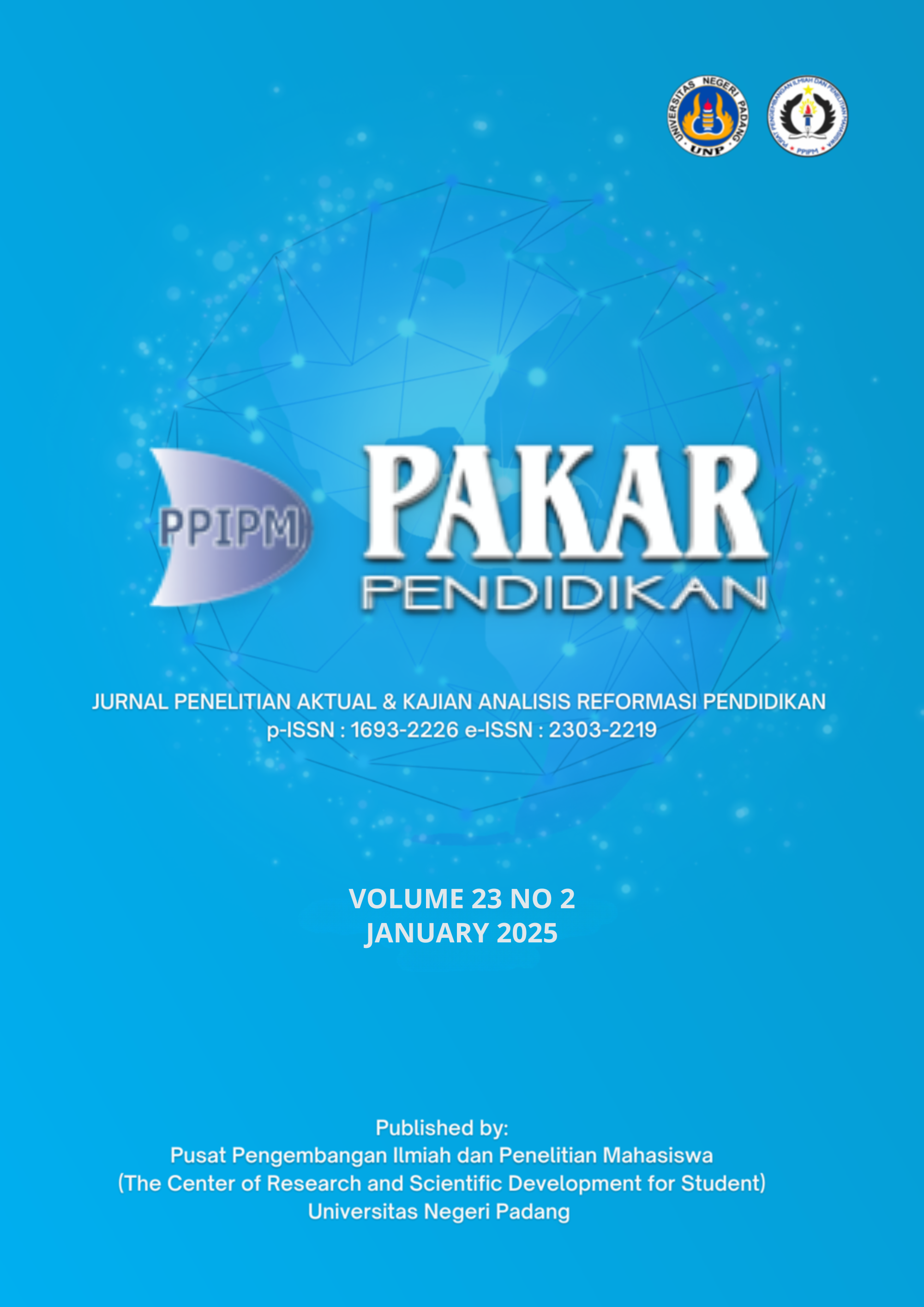The Interconnection Between Teacher Professional Education Parameter to The Student Learning Outcomes in Indonesia
##plugins.themes.academic_pro.article.main##
Abstract
Effective education is crucial for instructing students to attain competencies aligned with the curriculum of their educational level. This study aims to assess the teaching profession and its correlation with teacher performance, professionalism, and teacher confidence in connection with student learning outcomes. This research was carried out on vocational educators in West Sumatra who have participated in the teacher professional education program. This research employs the Partial Least Squares Structural Equation Modeling (PLS-SEM) analytical technique. Data was gathered through purposive sampling from vocational educators in vocational high schools in West Sumatra. The findings indicated that teacher professional education (X1) exerts a significant direct influence on Teacher Performance in the Merdeka Curriculum (Z1), Professional Teachers in Indonesia (Z2), and Self-Confidence (Z3), in addition to Student Learning Outcomes (Y1). Notably, professional teachers have a substantial impact on the execution of the Merdeka Curriculum in contemporary vocational high schools, as evidenced by the largest path coefficient of the relationship between X1 and Z1 (0.558). Professional education for vocational high school teachers in West Sumatra has a significant effect on teacher professionalism, self-confidence and improving student learning outcomes, even though Indonesia is implementing a new curriculum, namely the Merdeka curriculum, teachers are still ready to be professional, confident to have an impact on student learning outcomes.
##plugins.themes.academic_pro.article.details##

This work is licensed under a Creative Commons Attribution 4.0 International License.
![]() PAKAR Pendidikan is licensed under a Creative Commons Attribution 4.0 International License
PAKAR Pendidikan is licensed under a Creative Commons Attribution 4.0 International License
Free to:
- Share — copy and redistribute the material in any medium or format
- Adapt — remix, transform, and build upon the material for any purpose, even commercially.
PAKAR Pendidikan Journal is licensed under a Creative Commons Attribution 4.0 International License. This permits anyone to copy, redistribute, remix, transmit and adapt the work provided the original work and source are appropriately cited.
This means:
(1) Under the CC-BY license, authors retain ownership of the copyright for their article, but authors grant others permission to use the content of publications in INVOTEK Journal in whole or in part provided that the original work is properly cited. Users (redistributors) of PAKAR Pendidikan Journal are required to cite the original source, including the author's name, PAKAR Pendidikan Journal as the initial source of publication, year of publication, volume number, issue, and Digital Object Identifier (DOI);
(2) Authors grant PAKAR Pendidikan the right of first publication. Although authors remain the copyright owner.
Privacy Statement
The names, email addresses, and affiliations entered in this journal site will be used exclusively for the stated purpose of providing readers professional access to the authors whose articles are published by the journal. No other information is collected, and will not be made available for any other purpose or to any other party.


